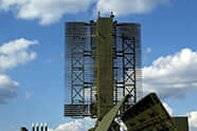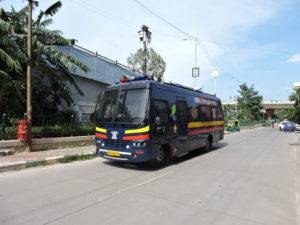IP based video surveillance is gaining increasing popularity over the traditional analog systems. Networks of thousands of IP-based cameras are now possible, but current prevalent centralized architecture based network video surveillance will become increasingly ineffective as the number of cameras grow.
A centralized architecture uses a master database located on a central control server. All configuration information, related to the cameras and NVRs/DVRs that constitute the installation, as well as all content is transmitted to the master database; for subsequent access and analysis.
As against this, in a distributed architecture; the data is spread across the system, generally close to where it is produced or needed. The real advantage of IP based surveillance can only be realized, if the solution is based on a distributed architecture.
Surveillance data can be classified into two types: configuration and video data. Configuration data stores information about the video surveillance setup, including lists of cameras, users and user permissions.
In a distributed architecture; rather than holding the configuration information and video data on a central server; a local NVR/DVR is used to store the information and the same is synchronized with the central server according to a managed schedule. Thus, even if the central server, a core LAN switch or WAN fails, users can continue to monitor using their local NVRs’ databases.
In addition, video management settings and information are stored by the IP cameras in their on-board memory. Therefore, rather than continuously streaming recording and configuration data back and forth between the remote locations and central server across a WAN, it is more practical to keep the data locally on the LAN.
Comparison between Centralized and Distributed Architecture
| Centralized Architecture |
Distributed Architecture |
| Cost |
|
Users continuously communicate with the central office: requires expensive infrastructure of high-end switches and also uses up precious bandwidth |
|
|
Network bandwidth is not used for continuous communication with remote locations. |
|
Data is viewed and managed between LANs. |
|
Live/recorded video streamed to central repository only in event of an operational incident, or as per a managed schedule. |
|
| Reliability |
|
In case of WAN failure, remote users are left stranded with no access to the live and recorded video from cameras which may actually be on the local network |
|
|
Even if the WAN fails, users can continue to monitor the remote locations using the NVR/DVR connected to their local network. |
|
| Server Failure |
|
All users of the system rely on the central database for login and license permission checks. If this database fails, the entire system fails. |
|
|
With distribution of databases, users still have a working system if any component fails. |
|
NVR/camera-level access can be provided to users in the LAN, ensuring higher security of data |
|
| Scalability |
|
As and when more cameras and users at remote locations are added to the network, bandwidth becomes congested. |
|
The network and servers need to cope with increased levels of traffic – database changes, user authentications, storage and transmission of recordings. |
|
|
With distributed architecture, additional cameras and users can be added to a sub-location; with minimal increase to WAN traffic. |
|
Thus, the four major issues; as listed above; associated with a centralized architecture are overcome with a distributed architecture. The distributed architecture can be considered an important prerequisite for large installations involving hundreds of cameras spread across many locations.



